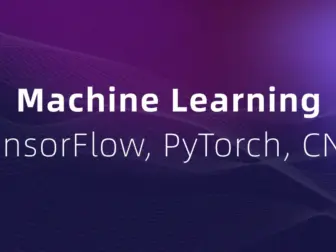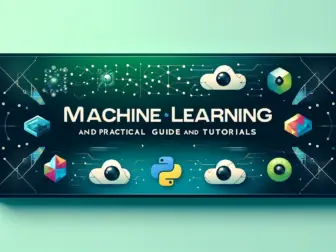Tag - TensorFlow
AI and Machine Learning, Blog , February 17, 2025 , AI Frameworks, Computer Vision, Deep Learning, Edge Computing, Medical Imaging, Model Deployment, ONNX, PyTorch, Speech AI, TensorFlow
Blog , May 29, 2024 , Computer Vision, Keras, Machine Learning, Model Training, OpenCV, OpenMV, PyTorch, TensorFlow, Tool Comparison
Blog , May 29, 2024 , Computer Vision, Embedded Applications, Keras, Machine Learning, Model Training, OpenCV, OpenMV, PyTorch, Real-Time Object Detection, TensorFlow
Exploring TensorFlow: The Cutting-Edge Framework Revolutionizing Machine Learning
Exploring TensorFlow: The Cutting-Edge Framework Revolutionizing Machine Learning
TensorFlow has become synonymous with state-of-the-art machine learning. As an open-source library developed by the Google Brain team, it has been instrumental in advancing the field of artificial intelligence. TensorFlow provides a comprehensive, flexible ecosystem of tools, libraries, and community resources that empowers researchers, developers, and businesses to build and deploy machine learning-powered applications.
One of TensorFlow’s core strengths lies in its ability to perform numerical computations using data flow graphs. In these graphs, nodes represent mathematical operations, while the edges embody the multidimensional data arrays (tensors) communicated between them. This makes TensorFlow particularly well-suited for deep learning, where neural networks learn from vast amounts of data. It supports a wide range of tasks, such as classification, regression, and clustering, making it a versatile tool for various applications, from natural language processing to image recognition.
TensorFlow’s architecture is designed for scalability and adaptability. It can run on multiple CPUs or GPUs, as well as on mobile and edge devices, which allows for distributed training and inference. This scalability is critical for handling large datasets and complex models that are typical in deep learning. TensorFlow also provides a high-level API, Keras, which simplifies model creation and experimentation, allowing developers to focus on the core concepts of their applications without being bogged down by intricate implementation details.
Furthermore, TensorFlow 2.x represents a significant evolution of the framework, emphasizing ease of use and tighter integration with Keras. It also introduces eager execution by default, making the platform more intuitive and user-friendly for beginners, without sacrificing the performance that seasoned practitioners depend on. This allows for a more Pythonic approach to coding, which can be less daunting for newcomers to the field.
TensorFlow isn’t just for building and training models; it provides tools for every stage of the machine learning pipeline. TensorFlow Extended (TFX) is a platform that enables end-to-end production of machine learning pipelines, including stages such as data validation, feature engineering, and model serving. With this suite of tools, TensorFlow ensures that models are robust, scalable, and production-ready.
The TensorFlow ecosystem also includes TensorBoard, a powerful visualization toolkit for understanding, debugging, and optimizing machine learning models. It provides insights into the model’s graph structure and metrics such as loss and accuracy, which are invaluable for developers during the model development phase.
Moreover, TensorFlow’s community is a vital aspect of its success. With an extensive network of users, contributors, and advocates, the platform is continually being improved and expanded upon. The community offers a wealth of tutorials, documentation, and forums where practitioners can share knowledge, solve problems, and collaborate on projects.
In conclusion, TensorFlow is more than just a machine learning library; it is a comprehensive platform that covers the full spectrum of machine learning tasks. Its flexibility, scalability, and extensive community support make it a go-to choice for professionals looking to harness the power of AI. As machine learning continues to evolve and become more integrated into various sectors, TensorFlow’s role in this transformation remains crucial, offering tools that democratize AI and enable innovative solutions to complex problems.




